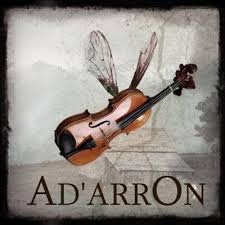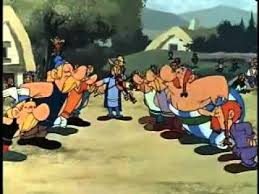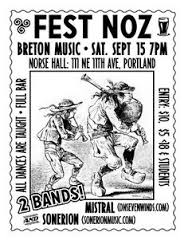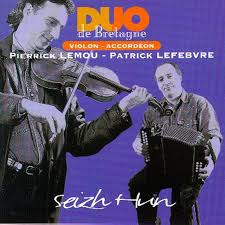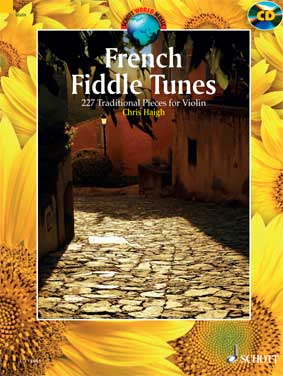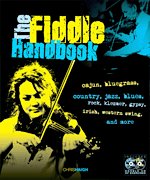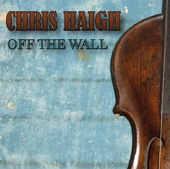
MENU TO FIDDLE STYLES:
French Fiddle
There are many countries in Europe which are famous across the world for their fiddle tradition. Ireland, Scotland, Hungary and Romania are obvious examples. France would certainly not be on many people’s list. Indeed, a swift Google search of “French Fiddle” will suggest that such a thing barely exists. Yet scratch below the surface, and you will find across the length and breadth of France as rich a tradition as you could wish for, with a healthy modern revival in interest, and a thriving performance and dance scene. Furthermore the tunes and techniques used are surprisingly fascinating and exotic. The repertoire is packed with unique dance forms, crooked tune structures, unusual and exotic modes, and non tempered scales.
French Regional Culture
So how and why does French fiddle manage to keep such a low profile? The answer lies in the history and geography of the country. France is huge compared to the UK, and up until the time of Napoleon its different regions were poorly linked by roads, and they had little culturally in common. Local dialects and languages were widely spoken, such as Breton in the northwest and Occitan in the south; it is said that before 1800, three quarters of the population spoke little or no French. There was a rich and diverse traditional folk culture- music, songs and dances- but it was split up into distinct and separate areas. In an attempt to pull the country together and create a unified, modern state, French national governments over a long period have tried to centralise culture on Paris, and to suppress expressions of regional or local differentiation.
If government centralism helped to stunt the development of local traditional fiddle music, the rise of the accordion at the start of the 20thC all but killed it off. The accordion was an orchestra or band in one, creating a complete sound, and loud to boot. New dances such as the waltz and polka progressively replaced the bourrées and other dance forms, and fiddlers had little demand for their services. By the 1940’s, traditional music was all but dead in most of France, and during the war Pétain’s ultra right Vichy government further hastened its demise by clumsily trying to force folk music on the people as a symbol of national solidarity. It was not until the 60’s that there was any revival of interest in folk music, and initially this was merely a reaction to the American and British folk revivals. One of the first folk clubs in Paris was the Centre Americain d’etudiants et d’artistes, formed in the mid 60’s; here you could expect to hear poor imitations of Bob Dylan or Joan Baez, but little in the way of French music.
French Folk Revival
Everything changed in May 1968. The date means little to us in England, but in Paris the students manned the barricades, and staged the closest thing to a revolution since 1789. The imposition of centralised cultural ideas was one of the targets of this student uprising, and it had far reaching consequences for music as well as politics. One of the most influential fiddlers today in Béarn, and leader of the band Ad’arrOn, is Thomas Baudoin. He told me
"May 68" is an event and a date in France that marks the transition from one era to another…it is an essential historical marker for the history of 20th century France. May 68 is "no" from all the youth of France to values they deemed outdated, values related to war, colonialism, productivism , social success ... and, in the process, the way of looking at the old French Provinces and traditions , including music and ancient instruments”
From the 70’s onwards, there was a huge growth of interest in traditional music across France, but its focus was entirely regional. A country like Ireland was small enough for musicians from across the country to meet and exchange ideas, and for a national musical style and identity to become established. This never happened in France. Each of the folk activists set about collecting tunes, learning from old fiddlers, setting up performance groups and so on, but only within the confines of their home region, be it Brittany, Central France, Alsace, Béarn or Dauphiné. Whilst Paris has become a global centre for recording and promoting of world music, particularly from African countries, there is little desire to promote French traditional music as a whole, and the rest of the world remains blissfully unaware of the home-grown treasures lying there.
In the remainder of this page I we will outline some of the most significant regions for traditional music around the country, and describe the most important tune and dance types.
FIDDLE MUSIC IN CENTRAL FRANCE
Central France is home to some of the richest fiddle traditions in the country. It is a sparsely populated, densely wooded and mountainous region with around 80 dormant volcanoes. It includes Auvergne, Limousin, and Morvan . All have been home to many fiddle players, particularly in the late 19th and early 20thC. Each area would claim a distinctive repertoire and style, but perhaps what most unites the music of Central France is the dominance of the Bourrée. The bourrée is French in origin, and is a direct descendent of the circle dance known as the Branle (pronounced roughly as “brawl). The Branle is a 16thC dance, and several are described in a collection entitled Orchesography, published in 1589. The bourrée appeared in the 17thC , and was particularly associated with the Auvergne. It has many variants throughout central France, but there are two main subdivisions- the two-time and the three-time bourrées. The 2- time bourrée is danced in lines of men facing women across the room. In a memorable episode of the cartoon series “Asterix the Gaul”, a fiddler plays as Asterix and his friends dance a bourrée opposite a line from their neighbouring tribe. Predictably, all does not go peacefully. Moustaches are ripped off and a fight almost breaks out.
3-time bourrées (sometimes called montagnardes or mountain bourrées) are played at a livelier tempo than the 2-time. They can be danced in lines, but can also be in two-couple squares. They are usually written in 3/8. The most common key for bourrées on the fiddle is D, with the melody mostly played on the upper two strings, the D being used as a drone. The extensive use of drones comes partly as a result of the importance of the hurdy-gurdy in central France. This strange instrument, whose strings are bowed by a turning wheel, has an unbroken tradition in France going back 1000 years or more. It is also known as the vielle, or wheel fiddle. The key features of its hypnotic sound are the rhythmic “buzz” created by an acceleration of the turning wheel, and the continuous drone. The instrument became popular in court music in the 17th and 18thC, and established the drone as a part of “polite music”.
Another instrument to feature strongly in Central France was the bagpipe or cabrette. The vocal tradition also influenced fiddle playing, as many bourrées were commonly sung, and fiddle phrasing commonly followed the dictates of the breaths taken by singers, for example at the end of a line. Perhaps the best documented fiddle tradition of the region comes from the Auvergne. Henry Doniol, writing in the mid 19thC, stated that
"The Auvergne peasant sings all the time and everywhere, to work, evenings, dances and it is wonderful to see how he is fond of music,"
Artense, a plateau in the Auvergne, is a particular hot-spot for fiddling. Of this area it is said
"Ici on se passait le violon comme un verre de vin” (here, one takes the fiddle like a glass of wine)
The tradition was almost unknown to the outside world until the 1970’s, when researchers located and documented thirteen old fiddlers, mostly farmers whose music was passed down through the generations. Among the most notable was Joseph Perrier. His extensive repertoire included, alongside the standard bourrées, many of the more modern and international dances tunes including marches, waltzes, mazurkas, polkas and scottishes. The Scottish is a dance found across much of Europe, probably dating from the Franco/Scottish catholic alliance of the 14th-16thC. The polka piquée is found in much of France but most particularly in the centre, and is a distinctively staccato version of the polka.
Joseph Perrier
Recordings of Perrier’s playing show that , in common with many fiddlers from Auvergne and beyond, he habitually used non-tempered scales. Typically this would involve playing “neutral” thirds and sevenths. The uninformed today would consider this to be merely sloppy playing. However this is by no means the case, and this style represented a rare and precious survival from the days before classical musicians such as Bach imposed an artificial tempered scale to allow complex key changes. In France, the rise of the accordion in the 20thC nearly saw the back of non-tempered playing, but happily many of the champions of the French fiddle revival were sensitive to the subtlety of the old style, and have deliberately set out to preserve it.
Jean-Marc Delaunay is one such. His book “Les Violons de L’Artense” details the style and repertoire of fiddlers such as Joseph Perrier, and his recordings preserve elements of the old-fashioned intonation style.
Jean-Marc Delaunay
Another expert on Auvergne fiddling is Jean-Francois Vrod. His recordings with Trio Violon and Café Charbon manage to combine a beautiful tone and modern sensibility with a keen ear for the crooked and whimsical nature of many of the old tunes. He seems particularly attracted to asymmetric tunes.
Vrod is from a family who, along with many others, moved from the Auvergne to Paris. From as early as the 18thC there had been a constant migration from the poor rural Auvergne to the bright lights, and areas such as that around the old Bastille became Auvergne ghettos within the metropolis. The epicentre of this immigrant community was the Rue De Lappe, a rough but bustling working class street occupied by coal merchants, carpenters and other craftsmen. There were also many bars or “bals” where Auvergnac musicians would play for traditional dancing. Initially the main instruments heard at these establishments would have been the cabrette (bagpipes), hurdy gurdy and fiddle. A key figure on Rue De Lappe in the early 20thC was Antonin Bouscatel, “King of the Cabrettaires”(1867-1945), and owner one of the most popular bars, Bal Bousca.
Rue de Lappe
Bouscatel performed here regularly with his friend, a hurdy gurdy player named Baptiste, until one night in 1906 (or 1903, depending on whose account you believe) they received a visit from an Italian accordionist, Charles Pérugi. The accordion, a relatively modern instrument, was viewed with suspicion by many tradition-minded musicians. At first Bouscatel was scornful when Pérugi asked to “sit in” on the session. However, he soon had to admit that the newcomer was a hit. Ruefully he told Baptiste
“The days of my bagpipes are numbered, and your hurdy-gurdy too. This character with his accordion carries with him our ruin!...It is a revolution on the way, do you hear? It is a complete orchestra, this instrument of the devil! It takes the breath out of you, this accordion of satan!”
He was all too right. Within ten years the accordion was rapidly replacing the fiddle, hurdy gurdy and cabrette, and soon became the principal instrument of dance music in France. "Bal Musette"- the music of the dance houses- became simply accordion music.
Fiddle players were simply unable to compete. A few learned accordion themselves, whilst others simply gave up. For those few such as Joseph Perrier who chose to work alongside accordionists, a distinct change in playing style was necessary. The hypnotic modal music, with its extended drones, was a thing of the past; even cabrettaires quickly abandoned the drone- a key feature of their instrument. Instead, distinct chord changes, accidentals and chromatic notes gave the music a much more modern feel. Another casualty was the use of non-tempered scales. The accordion, tuned to a tempered scale, made the old fashioned way of playing the fiddle simply sound out of tune. This transitional period is well documented by recordings made in Paris of Auvergnat musicians between the wars, particularly on the Le Soleil label, though these mostly feature cabrette and accordion. One of the best fiddle recordings was made just after WW2. Entitled “Violons Cézallier”, it features two fiddlers from the Massif Central, Alexandre Savignat and Antonin Pécoil. Pécoil was a friend of Bouscatel and a regular at Chez Bousca. His playing was marked by very frequent use of “accords de deux” (double stops) and “bourdons” (drones). He added many chordal flourishes and arpeggios to otherwise simple tunes.
It was a common feature of fiddling from the Massif Central to play “en coulee”- flowing or rolling; this involved use of long slurs, with often a whole bar played in a single bow. Savignat, by contrast with Pécoil, used few double strings, and used more vibrato and ornamentation. Some tracks on the recording show the two fiddlers playing in unison but an octave apart. Recording in an accordion- free environment, they also occasionally used the characteristic non tempered scales, with “neutral” or “mobile” thirds and sevenths. A feature of Massif Central fiddle playing rarely captured on old recordings is the deliberate tapping of the feet. Along with cabrettaires, fiddlers often tied bells around their ankle, and stamped loudly to provide rhythmic accompaniment. On the Cézallier recording the fiddlers were asked to place pillows under their feet! This foot tapping is a strong feature of many contemporary fiddlers in the region, as well as in other parts of France.
FIDDLE MUSIC IN BRITTANY
Internationally Brittany’s music is by far the best known from among the French regions. Perched on the north western corner of the country, facing out into the Atlantic, Brittany has always had its back turned to Paris. The survival of the Breton language, and a continuing political movement towards independence have encouraged the Bretons to stick doggedly to their traditional culture when it was largely being abandoned in the rest of France. Crucially, the Bretons have identified themselves as Celts, and have forged, over at least a century, close cultural ties with Ireland and Scotland. Local groups were set up to promote Breton dancing, called Cercles Celtique (Celtic Circles). The first was in Paris in 1917 and by the 1930’s they were common in Brittany. These remain popular today, and help with teaching and promotion of traditional music, and the staging of performances in local costume.
In 1942 of an organization was formed called BAS (Bodadeg ar Sonerion) - the Assembly of Pipers. A key figure in this movement was Polig Mountjarret, who played an important part in collecting tunes, (he published over 2000), and in popularising the highland pipes in Brittany. After a trip to Ireland in the late 1960’s, he began to organize contests along the lines of the fleadh, aimed particularly at the pipe bands which were by now spreading rapidly.
In the 1970’s there was a folk revival all across France, and a seeking-out of musical roots, and Brittany was already well ahead of the game, The Lorient Interceltique festival was set up in 1971, promoting the idea of pan-celtic music, and today it is a massive event.
Perhaps the most significant development in Breton music in the 1970’s was the rise to fame of Alan Stivell. He was a multi-instrumentalist, living in Paris but of Breton parentage who, playing a celtic harp, (modelled on the famous Irish “Brian Boru” harp by his father, Jord Cochevelou) created a new style of music- a fusion of Breton and Irish musical traditions, using both acoustic and electric instruments (usually including fiddle). He sang in English and Breton but, crucially, not French.
His music captured the moment perfectly, and was a great success. He was largely responsible both for introducing Breton music to the outside world, and giving the French their first taste of Irish music.
THE FEST NOZ
The most visible sign of the continuing vitality of Breton culture is the Fest Noz (night festival). This is a relatively modern invention, though the dances themselves can date back to the middle ages. Festoù noz (plural) are held at least once a year in almost every village throughout Brittany, and are the single most important way of the locals expressing their “Bretonitude”. Every village and town has its own local dances, but there are various dance forms which are known throughout the region. The events are larger and more elaborate than the typical British ceilidh, and usually include a bill with numerous acts, with singers, duos and bands.
BRETON DANCES
One of the best known Breton dances is the An Dro (En Dro in Breton, meaning “turn”.) It comes from the area around Vannes in southern Brittany. It is danced in lines, linked by the little fingers. Tunes are in 4/4 or 2/4, are usually 16 or 32 bars in length and, as with the bulk of the repertoire, individual tunes rarely have “proper “ titles. They are played at a leisurely pace.
Hanter Dro (Haunt Dro)- half turn is a variation on the above. Most are written in ¾ , 3/2 or 6/4 time. The accent, if in 6/4, comes on 1 and 3. Some Hanter Dros have an unexpected extra beat. This is known as the klam, when dancers duck down for a moment before resuming the dance.
Also from the Vannes area is the Laridé (wrinkled). This appeared in the middle of the 19thC, and for a time largely replaced the hanter dro. It has two variants; the laridé 6 temps, and laridé 8 temps. The number refers to the steps rather than the time signatures; the tunes are usually in 2/4 time, often with a bouncy, hornpipe- like feel.
The Gavotte is the most common dance in Brittany, particularly in the west. It is in 4/4 time, and is usually danced in a circle. It is constructed of 8 beat phrases, and each beat has its own function in the dance, and should be played appropriately. Many tunes have a structure of two bars (repeated) and then four bars (repeated) making 12 bars in all. Many however have just two lots of two bar sections, each repeated. Gavottes are often arranged into suites of three tunes, consisting of a Tonn Simple, a Tamm Kreiz, and a Ton Double to finish. A dance suite can last 15 to 20 minutes. The ‘Suite gavotte montagne” originates in the upland Monts d’Arré area.
The Pays Plinn is part of the upland area of bas-Bretagne. The Dans Plinn is a suite of three dances. The plinn has a lot of busy footwork, and it is said that it was originally used as a fun way of flattening the earth floor of a new dwelling. At the start of a Plinn, the singer may invite the dancers to “frappons nos pieds contre le sol jusq'u a tremble ce village –ci” (batter our feet against the earth until this village quakes).
There are also 19th and 20thC dances imported from other countries, and found throughout much of Europe; polkas, mazurkas and scottishes. These are frowned upon at some festoù noz.
There is also a group of tunes called gwerziou (gwerz is the singular); these are slow, lyrical songs similar to Irish Sean-nos or Scottish airs. The songs, some from as far back as the 10thC, are performed unaccompanied, and they are sometimes transferred to instruments such as the fiddle.
Accompaniment for these dances comes from a variety of different musical combinations. Perhaps best known is the classic duo (known as a sonneur de couple) of bombarde (similar to an oboe or shawm, but with a piercing tone and the volume of a trumpet) and binioù ( a small mouth-blown bagpipe with a single drone). This combination is particularly associated with western Brittany, also known as bas-Bretagne (lower Brittany)
BRETON FIDDLE
The fiddle has a long history in Brittany. It replaced the formerly popular 3-stringed rebec in the 17thC, and by the 19thC was probably the most widespread instrument used for dancing in eastern Brittany (haute Bretagne). Fiddlers were mostly semi professional, with farming as their main occupation. Their number peaked in the period 1880 to 1930, after which they declined steeply in the face of competition from the accordion, and from recorded music. In the west the fiddle had virtually disappeared, though in the east by the 1970’s there were still forty fiddlers whose work could be archived by the new generation of folk revivalists. The instrument had been largely ignored by the Cercle Celtique movement, since it was not uniquely Breton. However, the fiddle’s importance in Irish music brought it back to the forefront in the 1970’s. Indeed the majority of young Breton fiddlers found their way to Breton music having first sampled the delights of Irish jigs and reels.
Among the leading contemporary fiddle players in Brittany today are Pierrick Lemou, Christian Lemaître and Jackie Molard. Lemou, like many Breton instrumentalists, was drawn into playing first through Irish music. He is also interested in Quebeqois and Cajun fiddle music, and played with Alan Stivell for five years in the early 90’s. I asked Pierrick Lemou about Breton fiddle technique.
“the techniques and style of Breton is quite close to the fiddler from centre of France and very far from the Irish style ornamentations or Scottish. Of course there are the drones and "mordants" or" trills" The new Breton fiddlers have learned to play music for over 30 years by listening to bagpipes (bombarde et biniou) and singers to play their way to ornament. “
Traditionally, Breton fiddlers tuned the fiddle down a tone, to get a richer tone and a better key for singing. However, since fiddlers began working with other instruments this practice has largely been abandoned. To the south of Brittany lies Poitou. A characteristic dance from this area is the Pas D’été. This is an 18thC dance. Also called the French Hornpipe, it is an athletic dance involving fancy footwork and a good deal of jumping.
The tunes bear most of the same characteristics as the English hornpipe.
FIDDLE MUSIC IN BEARN AND THE SOUTHWEST
Béarn is a small mountainous region in southwest France, in what is now Aquitaine and was formerly known as Gascony. Geographically it lies against the Atlantic coast and the border with Spain in the Pyrenees. The local language is Basque- a variant of Occitan. There is a long-standing fiddle tradition here, with a repertoire dominated by two types of dance/tune, the saut and the branle. Rondeaus- simple 16 bar tunes in 2/4 or 6/8 are common in Landes de Gascogne to the north and, particularly as you get into the Basque region to the southeast, there are fandangos. Two-time bourrées are found in Midi-Pyrennees to the east.
The Saut, which translates as jump, is a dance found exclusively in the Basque-Béarn region. Each individual saut has a different series of steps. These range from simple and repetitive themes (eg Peyroton, Los Cauterets, Pantelon), to short tunes but with more complex structure (Mariana, La Craba), to long and complex dances such as Monein and Motchico. The tunes and associated structures for these longer sauts are bafflingly complex. It is a dance requiring agility and a considerable exercise of memory. The three instruments associated with the dance are the xirula (a three- holed flute) the tambourin de Béarn, (actually a type of psaltry) and the fiddle. The tunes can also be sung, using nonsense words as a mnemonic aid; each word (such as simple, dus, copar) referring to a different step.
The Branle (whose name has a most unfortunate translation!) is also found in other parts of France. It derives from a dance in the Middle Ages, but the name now covers a number of fairly widely ranging dances.
These branles have a first half in two sections, totalling 24 or 32 bars long, repeated many times, with improvisation. The second half has a change of melody, signalling the imminent end of the dance, and has no improvisation. It is in three or four parts, always totalling 32 bars, with a ral or coda at the end.
In order to play along with the tambourin de Béarn, whose strings are in A and E, fiddlers often use a sort of capo- a bootlace tied around the neck near the bridge. This raises the pitch by a tone, so that the fiddle can play in A and E, whilst fingering as if in G and D. Early photos show that this practice dates at least back to the early 20thC.
Bèarn fiddlers also prefer the bright, slightly nasal sound that the raised pitch produces. One of the most influential contemporary groups of the traditional revival in the region is Ad’arrOn, a five-piece band including two fiddlers. They have a number of useful cd’s, including “Vriolonaires Pyrénencs”, dedicated to reviving the lost fiddle style of Gascony. They draw on sources including the collections of Robert Bréfeil from between the wars. Jacques Baudoin, driving force behind Ad’Arron, told me
“there are very few, too few, fiddlers in our area but we are trying to train them. One of the goals of this CD is to leave a testimony of ancient practices that can serve as a benchmark for future generations... This is the meaning of all that we do but there is a long way to go!”
Jacques Baudoin
The fiddle style, reconstructed largely from the small number of early 20thC recordings, is characterised by drones, changing of octaves, and the use of parallel fifths. There is also a tradition of embellishment and improvisation, particularly towards the end of an individual dance tune. The style is fairly heavily ornamented, in a form closely related to that used by the singers in the rich “Bèarn polyphony” singing style.
FIDDLE MUSIC IN THE DAUPHINE
The Dauphiné is the mountainous area of southeast France bordering Italy, and including the current departments of Hautes-Alpes, Isère and Drôme. It is an area where historically the fiddle has been of great importance, and the fiddler himself viewed as an icon of local culture.
The most characteristic dance of the area is the rigodon, a fast dance in 2/4 time made up of short melodic phrases. When played for dancing, the rigodon often has a pause at the start of each time around the tune, starting slowly and accelerating. The tunes are usually performed on the fiddle, but can also be sung, delivered in the Occitan language with humorous and satirical lyrics, mocking for example the laziness of the men or the ugliness of the women from the neighbouring village. The first recorded mention of the rigodon comes in 1820, and states that they are “most often with lyrics in vulgar language”. The style of delivery from fiddlers and singers seems to have developed hand in hand, with certain elements of intonation and ornamentation passing between the two.
As is all too often the case, fiddlers in early 19thC were often associated with rowdiness and bad behaviour. In 1821, following “deplorable brawls” at a feast which “degenerated into …bloody scenes”; the following order was proclaimed
“It is forbidden to all fiddlers or other instruments forming any gathering around them, they could become responsible for the evil that would result and need to be arrested by order of the Mayor "
Despite this the fiddle remained popular, and interest reached a peak in Dauphiné in the mid to late 19thC when, at a time of romantic nationalism across Europe, traditional music and dance were recognized by the authorities as emblematic of their culture. Fiddlers were in high demand for civic events as well as weddings and parties. A Fiddlers’ Association was formed in the town of Gap in Haute Alpes in 1878, and a contest was organized for the “minstrel-rigodonistes”. This ran annually from 1878 to 1890. It was such a success that it was reported in 1879;
“the crowd was great and the stampede that followed disturbed the course of the dance contest.”
In common with the rest of France, the 20thC saw a decline in the fortunes of traditional music in Dauphiné. Fiddlers were no longer employed for civic events, and retreated to the upland rural areas. Interest in jazz, recorded music, and the accordion all took their toll.
The 1970’s saw a revival of the fiddle and rigodon traditions, with the formation of new folklore groups. Arco Alpino is a cross-border French and Italian band including 7 fiddlers. Among these are Olivier Richaume, responsible for much of the research on the Dauphiné fiddlers and the history of the rigodon. Another is Patrick Mazelier, author of a fine tune collection and leader of the group Rural Café.
Patrick Mazellier
Mazelier in particular has been instrumental in preserving, describing and promoting the repertoire and traditional style of the Dauphiné fiddler. The playing is highly rhythmic, with many double stops (doigté transversaux), and drones, “en bourdon” (like a bumblebee). The tunes are frequently modal in character, often mixolydian, but also sometimes Lydian. Some notes are often “défectif”- closer to an untempered scale. The repertoire, though dominated by rigodons, also includes aubades (serenades or slow airs), and farandoles (a long chain dance often performed outdoors. Many but not all are in 6/8 time.) In common with the rest of France, there are also bourrées, waltzes, foxtrots, polkas , marches and scottishes.
FIDDLE MUSIC IN ALSACE
Alsace/Lorraine is a region in the north east of France which has frequently passed between France and Germany. As such it is not surprising to find a considerable teutonic influence on the music. One of the most interesting tune/dance types here is the Zweifacher, best known for its use in Bavaria, where it probably originated. The translation of “two times” refers to the fact that this dance has two alternating time signatures. It is a very old dance, possibly dating back to the 15thC. It was considered highly provocative, as the couple danced close up and face to face, long before the waltz and the polka were invented. Depending on the dance steps, the tune consists of various combinations of alternating 2/4 (for a “turn” ) and ¾ bars (for a waltz step).
One of the best known is The Porcher (Le Porchier- the swineherd). This was introduced into the Alsace repertoire only recently, by the group "Le folk de la rue des Dentelles" , who led the Alsace traditional music revival in the 1980’s. Confusingly they chose to record this Bohemian tune, whose original name was Saulocker, entirely in 2/4, with the ¾ sections played as triplets, and this has now become the “traditional” way to play this tune.
Another fascinating group of tunes related to the zweifacher are “waltzes” in 5/8 and 11 time. A “valse a onze temps” (11 time), for example, may have bars arranged 3,3,2,3, or else 3,3,3,2.
One of the leading contemporary bands in Alsace is Au Gré des Vents. The core of the band is Danyèle Besserer on accordion, and Gilles Péquignot on fiddle. As with most French traditional musicians, the main focus of their work is tied to the accompaniment of dancing.
FIDDLE PLAYING IN CORSICA
The majority of this description is devoted to a handful of regions within France- largely those areas which for one reason or another have best preserved or revived their traditions. That is not to say that the rest of the country is devoid of fiddle music, and if you look hard enough, most areas will have something to offer. Corsica is one such. It is a wild, mountainous island out in the Mediterranean which came under French control in 1769.
The violin did not arrive here until the 19thC, but it soon replaced the caramusa bagpipe as the principal instrument for dancing, and proved useful for the accompaniment of the rich vocal tradition. Chief among the fiddle repertoire are valsa (waltzes), masurca (mazurkas), sculticcia (scottishes) and ploca (polkas). One of the leading figures of the riacquista (folk revival) on the island is fiddler Bernardu Pazzoni.
"French Fiddle Tunes"; a collection of 227 traditional tunes by Chris Haigh
Links:
Return to fiddlingaround.co.uk homepage
Chris Haigh is a freelance fiddle player based in London. He is a member of the barn-dance band Quicksilver, and has worked with the Coal Porters, Leon Hunt, and Orange Blossom Sound. He teaches and gives workshops on bluegrass, country, swing and western swing fiddle.
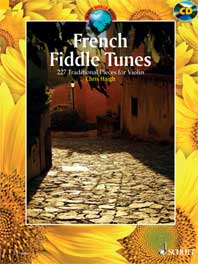
by Chris Haigh
